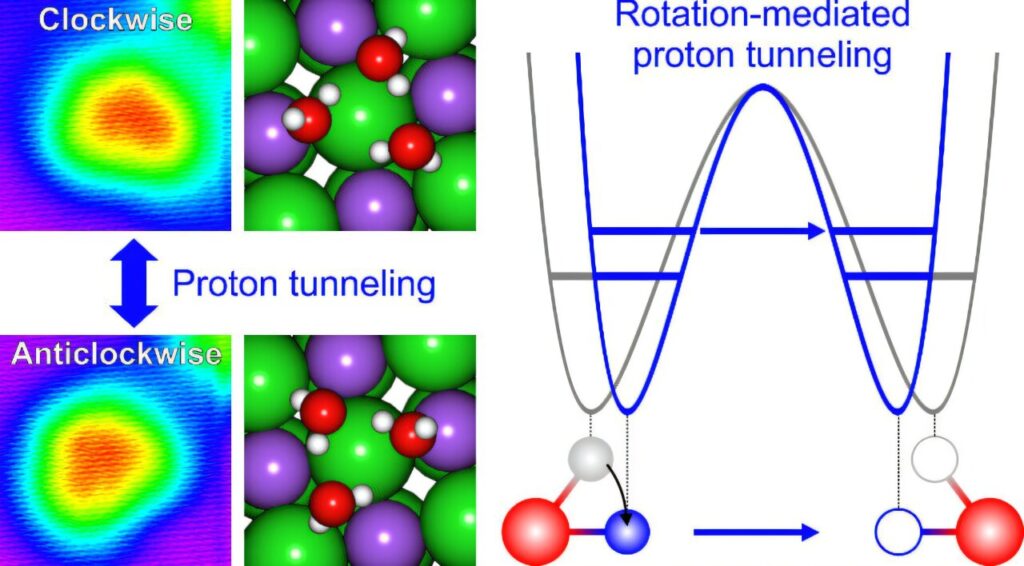A research team led by Professor Hyung-Joon Shin from the Department of Materials Science and Engineering at UNIST has succeeded in elucidating the quantum phenomenon occurring within a triangular cluster of three water molecules. The work is published in the journal Nano Letters.
Their findings demonstrate that the collective rotational motion of water molecules enhances proton tunneling, a quantum mechanical effect where protons (H+) bypass energy barriers instead of overcoming them. This phenomenon has implications for chemical reaction rates and the stability of biomolecules such as DNA.
The study reveals that when the rotational motion of water molecules is activated, the distances between the molecules adjust, resulting in increased cooperativity and facilitating proton tunneling. This process allows the three protons from the water molecules to collectively surmount the energy barrier.
To investigate this, the research team created a triangular arrangement of three water molecules and analyzed changes in its shape. They employed advanced analysis techniques, specifically Scanning Tunneling Microscopy (STM), to manipulate the molecules individually and study the resulting configurations.
The water molecules were fixed atop a salt film under ultra-high-vacuum conditions (10–11 Torr) and extreme cryogenic temperatures (between -268.75°C and -257.15°C) to prevent evaporation. The triangular arrangement was observed to distort, either left or right (isomerism), with the direction of distortion changing frequently. This behavior serves as evidence that proton tunneling occurs even at low temperatures.
When a specific voltage was applied via the STM probe to the distorted triangular structure, it was observed to transform closer to an equilateral triangle. This change indicates that the voltage activated the rotational movement of the molecules, which adjusted the hydrogen bond distances and enhanced cooperativity, leading to collective proton tunneling.
To validate their findings, the research team conducted additional experiments beyond just observing the shape of the water molecule triangle. They performed theoretical calculations and compared the tunneling rates of deuterium oxide (D2O) and water (H2O).
Dr. Yohan Kim and Dr. Huijun Han from UNIST served as co-first authors on this research. “While water is an excellent tool for experimentally analyzing the relationship between intermolecular cooperativity and proton tunneling, strong hydrogen bonding among the water molecules made these experiments challenging,” they stated. “We resolved this by employing techniques to isolate and analyze just three water molecules.”
Professor Shin, the corresponding author of the study, emphasized the importance of their findings by saying, “This research experimentally elucidates the critical role of molecular rotational motion and cooperativity among water molecules in regulating proton tunneling. The implications of these findings could introduce new strategies for controlling reactions in chemical processes, catalysis, and energy conversion.”


